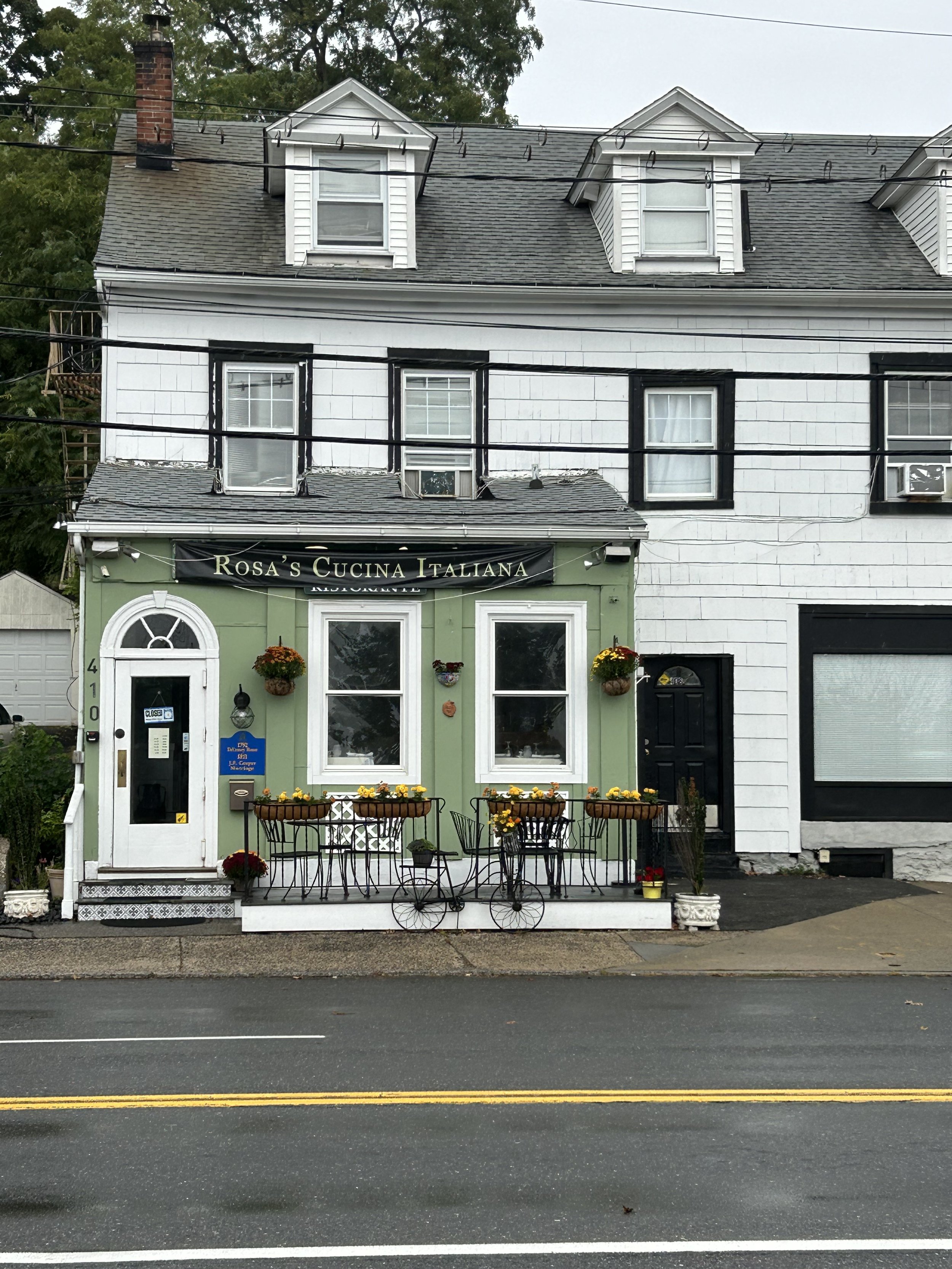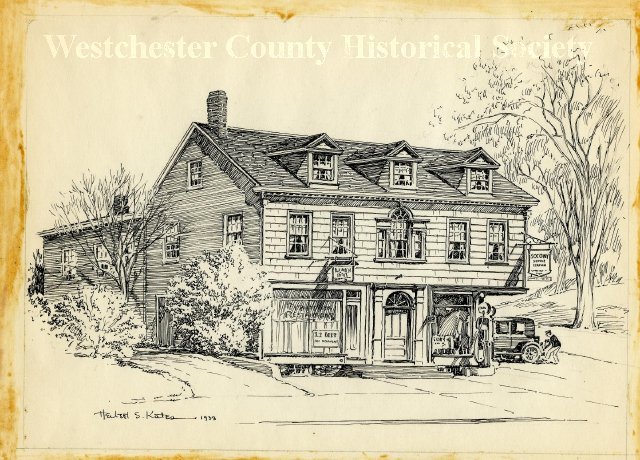Delancey Homestead
408 W Boston Post Rd, Mamaroneck
John Peter DeLancey

John Peter DeLancey (1753 - 1828), the leader of the parish at St. Thomas Church in Mamaroneck, was a prominent figure in the early 1800s and one of the largest enslavers in Mamaroneck. Following his service with the British in the Revolutionary War, he settled in Mamaroneck in 1792 and established a home and family on the land of his grandfather, Caleb Heathcote. The house that stands before you is not in its original location - it was moved from Heathcote Hill to its current location on Boston Post Road in 1901.
Role in Mamaroneck

Following his service in the war, DeLancey was certain that he would be hung for his loyalty to the British. However, he was soon informed that he would not be punished. He returned to Mamaroneck to reclaim his land and soon became further involved in the community. As an engaged community member, DeLancey played a significant role in local politics. He served as Town Supervisor, worked closely with the Town Board, and was involved in various initiatives to help restore Mamaroneck after the war. His dedication to community well-being extended to education; he served as a School Trustee and actively promoted local educational efforts. DeLancey continued to live in his family home until he died in 1828.
The Escape of Simon Woodbeck

DeLancey had many enslaved workers that were not mentioned in census data. According to local historians, this absence of data may be the result of a tax loophole. However, data exists on one person, Simon, due to the extensive documentation on his escape. On September 7, 1796, John Peter DeLancey purchased 25-year-old Simon Woodbeck (Sime) from Abraham Van Alen of Kinderhook, NY, for a life of enslavement. Eight months later, Simon escaped but was captured and returned. In 1809, Simon fled again, likely due to being one of the few remaining enslaved people in Mamaroneck, as most purchased after 1803 were freed.
Historians believe Simon’s sentence of lifelong enslavement motivated his escapes, especially as others gained freedom under New York’s gradual abolition law. Based on the 1799 law, Simon wouldn’t be freed until 1827 at age 56. Because Simon would be over 50, Delancey would be required to pay a $200 bond to the municipalities to secure Simon’s freedom. This law was introduced by several towns during this time to fund welfare programs for the formerly enslaved individuals (who were assumed to be incapable of earning an income) to avoid a reliance on taxpayer dollars.
A reward notice from Simon’s 1809 escape in The Northern Whig states he was recently released from State Prison, likely Newgate. His fate after 1809 is unknown, but DeLancey speculated he returned to Kinderhook.
Beyond Simon, John P. Delancey also owned other individuals including Nanny Pott, Tom Pott, Tom Pott, Jr., Tamar Pott, Jack Purdy, Dorothea (or Dorathea), Lewis, George, a child named Anne or Nancey, Margaret (Peg), Tom, Peter, Peter’s wife, Abraham, Sam, Phebe, Nanny, Nanny’s baby, Betty Halley, Lewis, Michael, A female cook, her daughter Harriet, her son Henry, several other children, Angevine, and 4 unnamed enslaved people.
